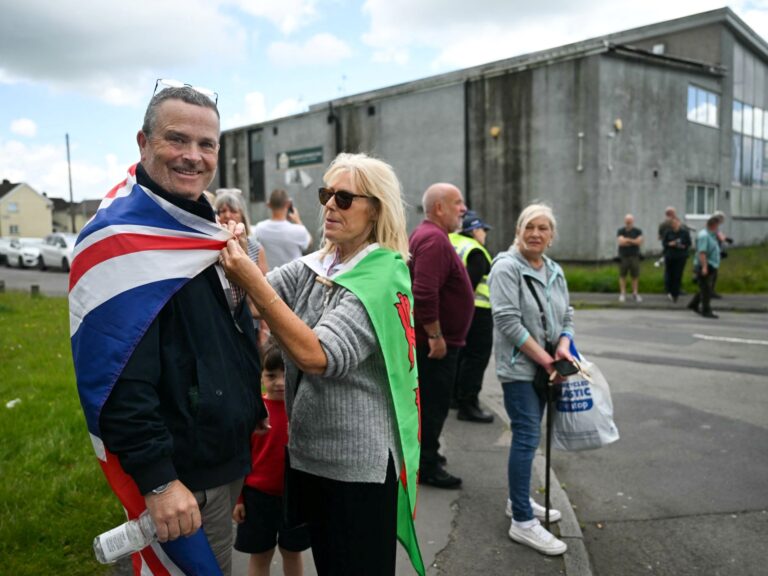In the UK, Chancellor Rishi Sunak announced an early general election on May 22, with voting due to take place on July 4.
Each party competing for 650 seats in the House of Commons, the lower house of the British Parliament, has published a manifesto detailing their stance on issues such as the economy, the National Health Service (NHS), immigration and Britain’s relationship with the European Union.
The UK’s last general election was held in December 2019, when Prime Minister Boris Johnson returned to power with the ruling Conservative Party. Following Sunak’s announcement, Parliament was dissolved on May 30 and the country entered a period known as “purda.” During this period, civil servants and local governments must refrain from announcing any new initiatives or plans that may be seen as favourable to a particular party. However, purda does not restrict polling activities by election candidates.
Below are the major parties and their campaign pledges ahead of the general election.
conservatives
The Conservative Unionist Party, informally known as the Tories.
Political stance: Center right to right
Established in: 1834
Manifest: Reduce borrowing and debt, and cut taxes by 17.2 billion pounds ($22 billion) a year from 2029 to 2030. Increase NHS spending above inflation, hiring 92,000 extra nurses and 28,000 extra doctors. Increase defence spending to 2.5 per cent of GDP. Build on post-Brexit European relations. Put binding caps on legal immigration and deport asylum seekers who enter Rwanda illegally.
Current Leaders: Rishi Sunak
Since the start of the administration: It began in 2010 (the first five years of a coalition government with the Liberal Democrats) under Prime Minister David Cameron, followed by Theresa May, Boris Johnson, Liz Truss and Rishi Sunak.
Number of seats in the House of Representatives in the outgoing parliament: 344
Latest poll support: According to British polling and data monitoring company YouGov, as of June 18, 20% of people surveyed intend to vote for the Conservative Party, which won 43% of the vote in the 2019 general election.
Labor
Political stance: Center-left
Established in: 1900
Manifest: Introduce a new industrial strategy with a focus on wealth creation rather than tax hikes, reduce NHS waiting times by adding 40,000 health checks each week and double the number of cancer screening machines, reverse the government’s plans to send asylum seekers to Rwanda and instead tighten border controls and improve ties with Europe.
Current Leaders: Keir Starmer
The last ruler: 1997 to 2010 under Tony Blair and Gordon Brown
Number of seats in the House of Representatives in the outgoing parliament: 205
Latest poll support: 36 percent. The party won 32 percent of the vote in 2019.
LDP
Political stance: Center to center-left
Established in: Founded in 1859, it was formed in 1988 by the merger of the Liberal Party and the Social Democratic Party, two parties that had been powerful in the 19th and early 20th centuries.
Manifest: Improve relations with the European Union. Focus on renewable energy. Increase the number of doctors and pay the salaries of caregivers. Increase defense spending to at least 2.5% of annual GDP. Abolish the Rwanda Plan and lift the work ban on asylum seekers. Reduce greenhouse gas emissions by 2045 and hire mental health professionals in all schools.
Current Leaders: Ed Davey
In power: From 2010 to 2015, the UK formed a coalition government between Prime Minister David Cameron’s Conservative Party and Deputy Prime Minister Nick Clegg, who was then leader of the Liberal Democrats.
Number of seats in the House of Representatives in the outgoing parliament: 15
Latest poll support: 14 percent. In 2019, the party won 12 percent of the vote.
Green Party
Political stance: Left-wing eco-politics
Established in: 1990
Manifest: Increase taxes on the wealthy. Put railways, water and energy companies under state control. Increase the NHS budget. Abolish Trident, the UK’s nuclear deterrent programme. Help immigrants to “settle” and abolish minimum income requirements for spouses of work visa holders. Rejoin the EU. End all new fossil fuel extraction and rely on wind and solar power. Abolish undergraduate tuition fees.
Current Leaders: Cara Denier and Adrian Ramsay
Number of seats in the House of Representatives in the outgoing parliament: One
Latest poll support: The 7 percent mark is the party’s highest ever vote share; in 2019 the party won 1 percent of the vote.
Reform Britain
Political stance: Right wing
Established in: 2019 (as the Brexit Party)
Manifest: Accelerate infrastructure projects. Cut red tape by scrapping employment laws that make it difficult for employers to hire and fire workers. Reduce property purchase tax, cut tax for frontline NHS and social care staff and offer tax relief on private healthcare. Hire 30,000 new army staff and increase defence spending. Detain and deport illegal immigrants. Repeal more than 6,700 EU regulations that the UK kept after Brexit. Ban “transgender ideology” in schools.
Current Leaders: Nigel Farage
Number of seats in the House of Representatives in the outgoing parliament: One
Latest poll support: 18 percent. The Brexit Party won 2 percent of the vote in 2019.
Scottish National Party
Political stance: Center-left
Established in: 1934
Manifest: Achieve Scottish independence from the UK. Protect the NHS from privatisation and austerity and increase investment in hospitals, schools, rail and road infrastructure. Abolish Trident. Increase maternity pay. Rejoin the EU. Abolish the Rwanda Plan. Demand an immediate ceasefire in Gaza.
Current Leaders: John Swinney
Number of seats in the House of Representatives in the last parliament: 43
Latest poll support: 3 percent. In 2019, he received 4 percent of the vote.
Plaid Cymru
Political stance: Centre-left to left wing
Established in: 1925
Manifest: Achieve independence for Wales. Provide fair funding for Wales. Recruit 500 more GPs. Increase child benefit payments by 20 pounds ($25) per week. Rejoin the EU and single market.
Current Leaders: Rhun ap Iorwels
Number of seats in the House of Representatives in the last parliament: three
Latest poll support: 1 percent. In 2019, he received 0.5 percent of the vote.

